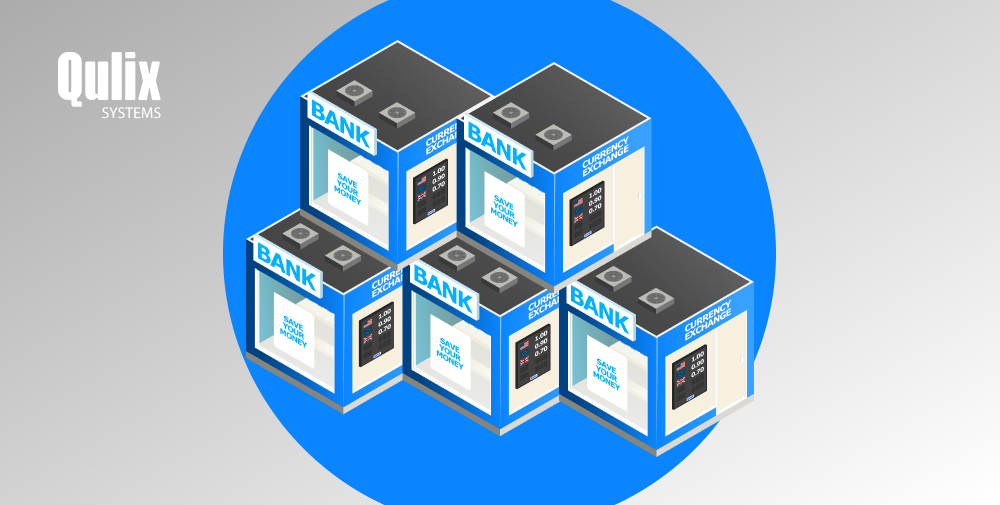With the rise in popularity of digital banking, usability issues have become extremely relevant for banks. To ensure maximum engagement from customers, mobile apps, and online front ends should be modified and improved all the time. To be able to constantly deliver modern online experiences banks divide backend systems into microservices. The idea extends to the frontend world in the form of micro frontends. Read on to know more about micro frontends and how they can speed up banks’ ability to make application updates easily and without compromising user experience!
written by:
Alexander Arabey
Director of Business Development, Partner
With the rise in popularity of digital banking, usability issues have become extremely relevant for banks. To ensure maximum engagement from customers, mobile apps, and online front ends should be modified and improved all the time. To be able to constantly deliver modern online experiences banks divide backend systems into microservices. The idea extends to the frontend world in the form of micro frontends. Read on to know more about micro frontends and how they can speed up banks’ ability to make application updates easily and without compromising user experience!
The pandemic as an accelerator for the shift to digital banking
The harsh conditions during the pandemic have created an ideal climate where multiple tech predictions rapidly turn into reality. The one about traditional banking services extinction (see some proof here) is among them. Fewer and fewer people are visiting a physical bank, and this is undoubtedly one of the major factors that drive the adoption of digital banking. At the same time, consumers just can’t do without a multitude of convenient banking services they used before COVID-19 events, which results in an increased interest in digital banking.
Thus, strict social distancing led to a situation where digital channels have become the primary way for banks to provide their services to individuals and legal entities.
It is obvious that, when it comes to online banking, advances in customer experience play the most important role in customer retention. The way services interact with the customer directly affects business profitability. That is why currently we can see a constantly increasing number of financial institutions focused on a such well-known trend as “consumerization of the enterprise”.
At the same time, another reason for banks to adopt customer-first patterns in online services is the fintech industry.
Fintech companies that respond instantly to the users’ moods, providing them with appropriate high-quality services (at this successfully combating top security issues), are now serious rivals for banks in the battle for customers.
The conclusion is that to attract and retain clients, banks will have to work hard to modify existing services and add new ones, which are compliant with the new norms in a new world.
However, digital services improvement processes make it difficult to provide continuous user experience, as adding new functionality requires time. Moreover, when it comes to monolithic apps, it would be more correct to say “a lot of time”.
Still, optimizing the digital customer experience can be quite simple if microservices and micro frontends come into play. Microservices are what engineers opt for to write agile backend systems; for democratic modernization of frontend applications, developers use micro-frontends.
To get more information on microservices you can read this, but now we are going to focus on the main subject of our today’s article — on micro-frontends.
So, what do exactly micro-frontends or micro-frontend architecture mean? Let’s find out.
What are micro front ends anyway?
A micro-frontend architecture is a design approach where a front-end app is decomposed into independent ‘micro frontend applications’ working loosely together.
Micro frontend architectures let enterprises add new features and frontend functionality to their apps without having an impact on other parts of the code.
This architectural style ensures shorter development release cycles, allows innovating, and getting your ideas to market faster.
Well, the idea behind micro frontends is more or less clear. However, micro-frontends are not just another buzzword in the software development world. Micro-frontend architecture is a promising design approach chosen by many successful companies. That’s why we believe it’s worth being explored more deeply and are going to prove it below.
How micro front ends can help banks to speed up their app modernization and increase revenue?
Using a micro frontend approach has several advantages which makes it easier for banks to update and deliver quicker their applications. We have placed the key pluses below for you to have a comprehensive view of the topic.
Micro-frontends enable developers to combine various modern technologies.
New JavaScript technologies are coming almost every day. In this regard, developers constantly have to decide on a certain one. However, a monolithic frontend allows developers to take advantage of only one specific technology. This is quite an unfortunate circumstance given the fact that every JavaScript technology has its own pros.
Micro-frontends can solve the problem easily. They let developers use different technologies to create different pieces of the frontend. When the teams working on the business features get an opportunity to mix powerful technologies seamlessly, banks get their updates and feature-rich applications faster.
Micro frontends allow multiple teams to develop and test services independently.
The micro-frontend approach implies dividing the frontend into micro-applications, with each managed by different teams independently. This means that each team can develop or test the service, regardless of the other teams’ progress.
Such an absence of interdependence between teams significantly shortens both development and testing time, which enables banks to provide users with improved services quicker.
Micro frontends allow individual pieces of the frontend to be added, changed or removed without rebuilds.
The monolithic architecture does not let you change a component or upgrade a specific dependency unless the rest part of the app also supports this change. For this reason, updating requires a long process of development and more testing time.
With microfrontends, each team can change any of the individual functions without colliding with the rest of the application, which undoubtedly accelerates modernization and increases banks' speed to revenue.
Micro frontends let scale development teams.
Since the micro frontend architecture is all about being able to work in autonomous teams, it becomes possible to involve a larger number of resources in project work.
Sure thing, if a larger number of independent talents simultaneously work to improve an existing application, the modernization process will be completed much faster.
Conclusion
For banks to be able to maintain their competitive edge and keep the modern user engaged, they need to update their digital channels constantly. A slow, outdated, and clunky interface blocks business success and prevents propelling the brand forward. That’s why advanced leaders pay so much attention to the modernization of their digital products.
However, the long process of development and continuous UX are two totally incompatible things.
Micro frontends were designed specifically to solve this problem. The architectural style improves front end security as well as eliminates bottlenecks in front-end optimization by turning big things into smaller and more manageable ones.
Among undeniable strengths of micro frontends are:
- the ability to implement the particular technology stack chosen by the dev team,
- scalability of the teams working on the application features,
- minimizing dependencies between multiple workgroups, and
- the ability to easily upgrade or even rewrite various parts of the frontend more incrementally than was previously possible.
Yet, it is necessary to understand that like any architectural approach micro frontends have their downsides. The most considerable is the duplication of common dependencies and operational and governance complexity.
So, before adopting such architecture, an important issue needs to be considered by each bank: whether you have the IT and organizational maturity required to use such an approach without making things even worse? Are you ready to manage the increased number of repositories, tools, servers, domains, etc.?
If you doubt whether your IT department can cope with the additional technological complexity level that the implementing of micro-frontends brings along with their benefits, or if you don’t have your own in-house talents, Qulix Systems is ready to support you!
To know more about our micro frontends projects and how we can help you to implement effective app-modernization programs visit our website or contact our Support team.







